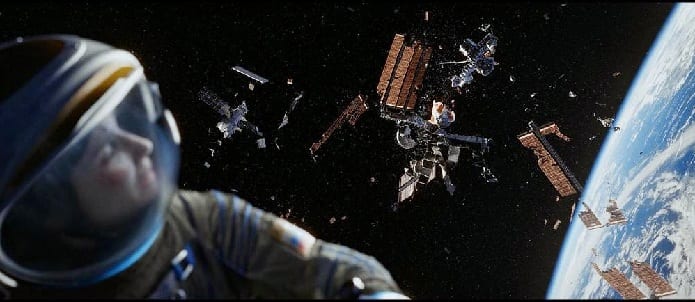Gravity Redux : Explosion of US Military Satellite causes space debris which can be fatal for all the spacecrafts out there
If you have seen the Hollywood sci-fi movie, Gravity, you will know the dangers of space debris. A real life Gravity is in the making in the skies above us. Scientists at the University of Southampton have detected over 100 space debris as a result of the explosion of US Defense Meteorological Satellite Program (DMSP) F13 satellite in the orbit, on February 3rd 2015. This is an indication that over 50,000 smaller fragments that are larger than 1 mm must have also been created during this explosion.
ESA scientists are now worried because a recent study reveals that though the space debris that can be detected by radar do not pose much threat to other spacecrafts however the smaller space debris, that are non detectable by radar, are the ones that are hazardous to the future missions and spacecrafts.
Hugh Lewis said it is essential to understand these objects and added: “Even though many of these objects will be no bigger than the ball in a ballpoint pen, they can disable a spacecraft in a collision because of their enormous speed.” Lewis is from UK Space Agency on the Inter-Agency Space Debris Coordination Committee (IADC).
“The fragments from the explosion spread around the Earth forming a band, which can be crossed by spacecraft with orbits that are quite different from the one of DMSP-F13,” said Francesca Letizia, a PhD student leading the research team.
Scientists developed a new technique known as CiELO (Debris Cloud Evolution in Low Orbits); to understand the spread of the debris and the potential collision risk to the space missions by these smaller space debris. Further, scientists produced a collision probability map that showed peak in the risk at altitudes just below the area of explosion. By creating the debris cloud produced by the explosion as a fluid, this map was created. The fluid used here changed its density under the effect of the atmospheric drag.
This study was published in the Journal of Guidance, Control and Dynamics, Camilla Colombo supervised this study and commented: “Treating the fragment band as a fluid allows us to analyse the motion of a large number of fragments very quickly, and much faster than conventional methods. In this way, the presence of small fragments can be easily taken into account to obtain a refined estimation of the collision probability due to an explosion or a collision in space.”
Letizia gave the details of the findings by saying: “This map can be used with a database of spacecraft or space debris objects to identify the targets that are most exposed. For example, in the map we show the top ten spacecraft at risk from the fragments generated by the explosion of DMSP-F13 according to our model. They are mainly U.S. and Russian satellites in sun-synchronous or polar orbits.”
Further, Lewis said: “In the case of the DMSP-F13 explosion, our work has shown that the introduction of a new cloud of small-sized debris into orbit will have increased the risks for other spacecraft in the vicinity, even if the risk from the larger fragments has been discounted.”
Ultimately, the findings prove that the smaller space debris pose hazardous risk to future missions and other spacecrafts that mostly include the U.S. and Russian satellites, it also confirmed that the threat posed by larger fragments is negligible.

